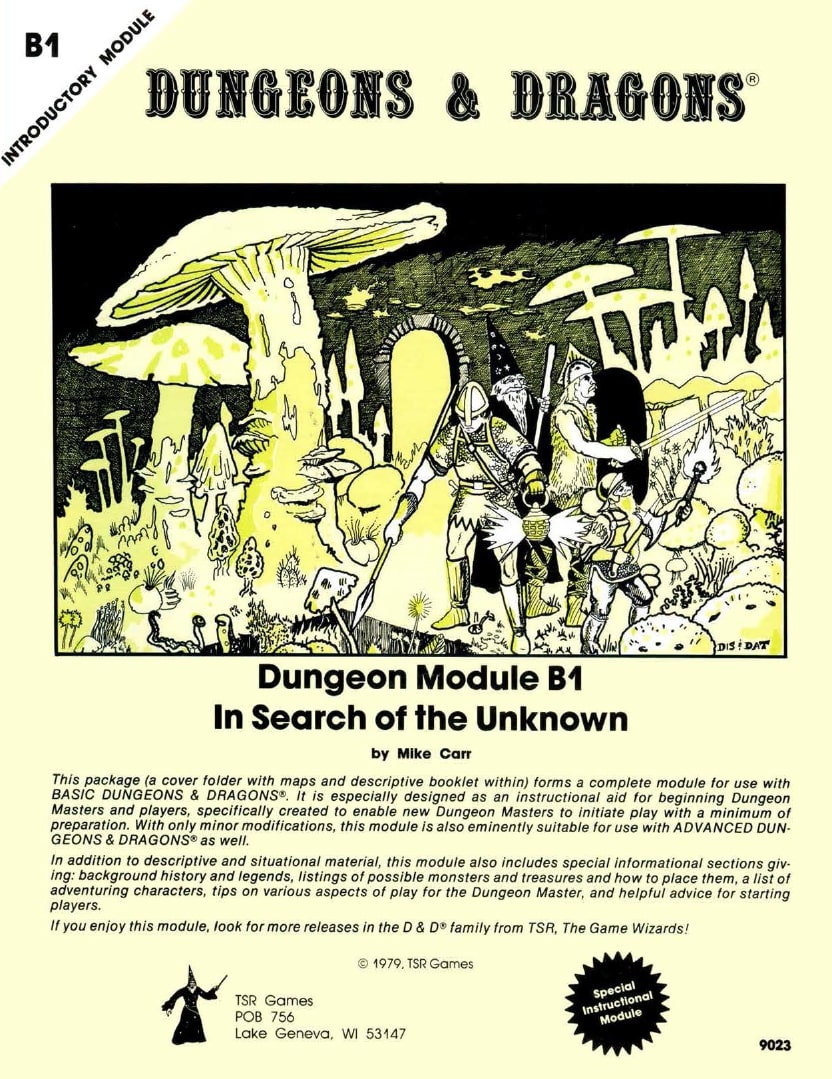Before we go on to remedy the dearth of experience points stocked in The Deep Halls, I want to check our work against a Holmes-era published module.
In “One Deadly Dungeon,” we use the probabilities for monsters and treasures on the Flying Dungeon Stocking Table to calculate how much experience might be earned in The Deep Halls Level 1. In 51 encounter areas, we count 4,277 XP from treasures and monsters, including the wandering type.
On his D&D Hotspot, Dan “Delta” Collins treats Dungeon Module B1 In Search of the Unknown with similar scrutiny. In the two-level complex called the Caverns of Quasqueton, Dan counts 4,264 stocked XP in 56 encounter areas. He omits wandering monsters.

So as not to compare daggers to broadswords, we remove wandering monsters (425 XP) from The Deep Halls—3,852 XP.
Comparing Experience Points per Encounter Area
| Dungeon | Total XP | No. of Areas | XP per Area |
|---|---|---|---|
| Quasqueton | 4,264 | 56 areas | 76.14 |
| The Deep Halls | 3,852 | 51 areas | 75.53 |
Rounding brings the XP per area to the same. This should not be surprising. I derived the Flying Table from guidelines given in Holmes Basic with the two earlier supplements B1 replaced. The correspondence only suggests that, one, module designer Mike Carr used the same guidelines, and two, at least regarding monsters and treasures, the Flying Dungeon Stocking Table hits the mark.
While we’re poking around in Carr’s Quasqueton, let’s look at how the total XP is distributed between treasures and monsters.
Comparing Treasure-to-Monster Ratio
| Dungeon | XP from Treasure | XP from Monsters | Ratio |
|---|---|---|---|
| Quasqueton | 3,400 | 864 | 39:10 |
| The Deep Halls | 2,752 | 1,100 | 25:10 |
The same amount of XP is delivered in a different balance. More monsters dwell in The Deep Halls. Quasqueton contains more wealth. There is room yet in our dungeon for at least half again the treasures.